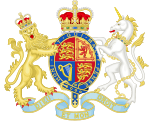- Director of Public Prosecutions (England and Wales)
-
This article is part of the series: Courts of England and Wales Law of England and Wales  Administration
Administration- Ministry of Justice
- Her Majesty's Courts and Tribunals Service
- Judges' Council
Criminal courtsCriminal prosecution- Attorney General
- Director of Public Prosecutions
Legal professionThe Director of Public Prosecutions of England and Wales (DPP) is a senior prosecutor, appointed by the Attorney General. First created in 1879, the office was unified with that of the Treasury Solicitor less than a decade later before again becoming independent in 1908. The Director's department and role underwent modernisation from 1944 to 1964 under Sir Theobald Mathew QC, and further expansion with the introduction of the Crown Prosecution Service (CPS) in 1985, which came under the control of the Director. The Director is answerable to and appointed by the Attorney-General for England and Wales, and oversees all public prosecutions, most of which are dealt with by the CPS.
Contents
History
A Director of public Prosecutions was first recommended by the Criminal Law Commission in 1845, who said that "the duty of prosecution is usually irksome, inconvenient and burthensome; the injured party would often rather forgo the prosecution than incur expense of time, labour and money. When, therefore, the party injured is compelled by the magistrate to act as prosecutor, the duty is frequently performed unwillingly and carelessly." An 1856 Act allowed the Home Office to ask the Treasury Solicitor's Department to take on cases of particular importance, but this left many cases falling through the net. As a result, the Prosecution of Offenses Act 1879 was passed, which created a Director of Public Prosecutions (DPP) to advise the police and personally act in cases of importance; an elaboration on the 1856 Act.[1]
The first appointee was Sir John Maule QC, who took up his post in 1880. Maule was a quiet, reserved and cautious man, who interpreted his powers in an unnecessarily restrictive way, feeling that he could do little more than send cases to the Treasury Solicitor's office, and that it was not the job of the DPP to prosecute cases. He came under harsh criticism, which reached a head in 1883 when he refused to authorise prosecution of a pair of blackmailers, who were instead prosecuted privately, convicted and given heavy sentences. As a result of the fallout, the then-Home Secretary William Harcourt set up a committee into "the present action and position of the Director of Public Prosecutions".[2]
The Committee concluded that the DPP's job, in which he took no practical part in prosecutions, would be best unified into the job of the Treasury Solicitor, and that the DPP should be merged with the Treasury Solicitor. This was accepted, and the DPP "vanished in all but name". Successors for the rest of the century held both titles, and both jobs, thanks to the Prosecution of Offences Act 1884.[3] The next few appointees were unimportant and uncontroversial, until Sir Charles Willie Matthews QC, a man Rozenberg describes as "the first real DPP". The Prosecution of Offenses Act 1908 repealed the section of the 1884 Act that unified the DPP and Treasury Solicitor, giving Matthews an office of his own on his appointment in the same year.[4]
The organisation remained rooted in its Victorian origins, still operating under the 1886 Prosecutions of Offences Regulations, until the appointment of Sir Theobald Mathew QC in 1944. The youngest man (and only solicitor) to be appointed DPP at that time,[5] Matthews modernised the office, updating the Prosecutions of Offences Regulations, introducing Trunk Dialling and using dictaphones to make up for the small number of shorthand typists. He reorganised and modernised the department as a whole, and many of his modifications are still in place; for example, a provision in most new Acts of Parliament dealing with the criminal law that requires the consent of the DPP for a prosecution.[6] At the same time he battled with the Civil Service for an increase in staff numbers, securing the appointment of three new Assistant Solicitors in the late 1950s; a large leap for a staff which had previously numbered five, excluding secretaries.[7] In 1985, the Prosecution of Offences Act 1985 created the Crown Prosecution Service (CPS), a dedicated, nation-wide prosecution service under the control of the DPP. This involved the recruitment of 3,000 new staff, which despite difficulties the DPP succeeded in doing. The CPS now handles the vast majority of prosecutions.[8]
List of Directors
- Sir John Maule QC (1880-1884)
- Sir Augustus Stephenson QC (1884-1894; also treasury solicitor)
- Lord Desart QC (1894-1908; also treasury solicitor)
- Sir Charles Willie Matthews QC (1908-1920)
- Sir Archibald Bodkin QC (1920-1930)
- Sir Edward Tindal Atkinson QC (1930-1944)
- Sir Theobald Mathew KCB MC QC (1944-1964)
- Sir Norman Skelhorn QC (1964-1977)
- Sir Thomas Hetherington QC (1977-1987; first head of CPS)
- Sir Allan Green QC (1987-1992)
- Dame Barbara Mills DBE QC (1992-1998)
- Sir David Calvert-Smith QC (1998-2003)
- Sir Ken Macdonald QC (2003-2008)
- Keir Starmer QC (2008-)
References
Bibliography
- Rozenberg, Joshua (1987). The Case for the Crown: the Inside Story of the Director of Public Prosecutions. Equation Publishing. ISBN 1853360112.
Categories:- Prosecution services of the United Kingdom
Wikimedia Foundation. 2010.
